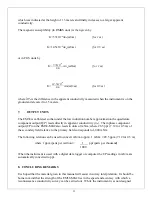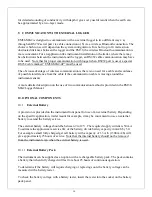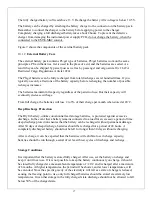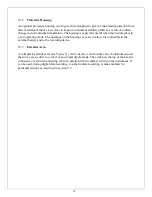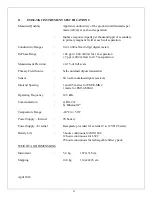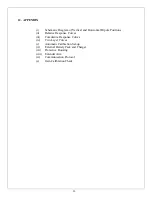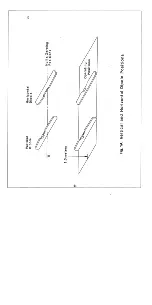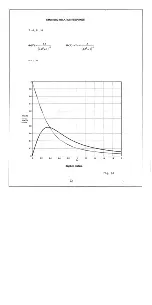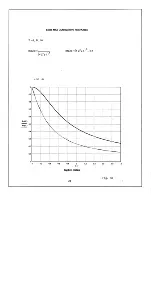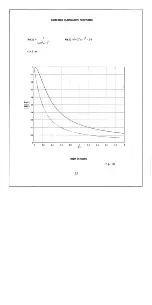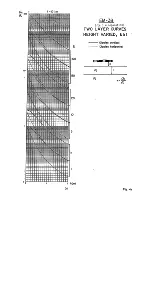
11
end of the instrument) either when on survey or when the null or zero is being set. To check
whether a metal object is giving a detectable response simply move the object a few meters away
from the instrument and note whether the reading changes. No change -- no problem.
How near can the operator approach a conductive object such as a pipe, fence, etc., and still
ensure that the readings are accurate? In a laterally uniform ground the EM38-MK2 should read
the same regardless of the azimuth of the long axis (i.e., whether it is pointing north/south or
east/west). Any significant difference in the reading in two directions at right angles is an
indication of a significant lateral disturbance. To check whether a pipe or fence is producing an
erroneous reading make two measurements of the ground conductivity, one reading with the long
axis pointing to the object and a second reading at right angles. If the two readings differ by
more than 10% a significant disturbance is being felt and the measurement point must be located
further away from the object.
It should be noted when traversing a pipe on a survey line perpendicular to the pipe direction in
the vertical dipole mode that the reading over the pipe may decrease and attempt to go negative.
If the goal is to locate the pipe one should again rotate the instrument 90
o
so that the long axis is
parallel to the pipe in which case the apparent conductivity reading becomes a maximum when
(a) the instrument is directly over the pipe and (b) also pointing in the same direction as the pipe.
These remarks apply in the vertical dipole mode, which should be used for the detection of pipes
since the exploration depth is greatest. It is, of course, assumed that the pipe is conductive i.e., is
made of iron, steel or copper.
4. ELECTRICAL INTERFERENCE
Occasionally electrical interference will be encountered, either from cultural sources (50/60 Hz
power lines, industrial noise) or from atmospheric electricity (spherics). Noise from cultural
sources will often manifest itself as slow or rapid semi-periodic oscillations of the output meter
reading which must be averaged out by the operator. The amplitude of these excursions may be
a function of the coil orientation and will also be largest on the most sensitive (low conductivity)
range.
Atmospheric noise will usually show itself as sporadic changes of the meter reading, usually
most severe in the horizontal dipole mode. In this case the receiver operator must again average
out the noise, or restrict himself to the vertical dipole mode of operation, or wait until the
spherics have decreased.
5.
NOTES ON SURVEY INTERPRETATION
5.1
Linearity of Response
The indicated apparent conductivity measured with the EM38-MK2 is accurate over most of the
range of the instrument.
5.2
Relative Response with Depth
TN-6 discusses in detail the fact that it is possible to calculate the relative response from material
at different depths for both the vertical and horizontal dipole mode coil configurations. The
Summary of Contents for EM38-MK2
Page 7: ...5 Fig A...
Page 23: ......
Page 24: ......
Page 25: ......
Page 26: ......
Page 27: ......
Page 28: ......
Page 29: ......
Page 30: ......
Page 31: ......
Page 32: ......
Page 33: ......
Page 34: ......
Page 35: ......
Page 36: ...34...
Page 37: ...35...
Page 38: ...36...
Page 39: ...37...
Page 44: ...42...

















